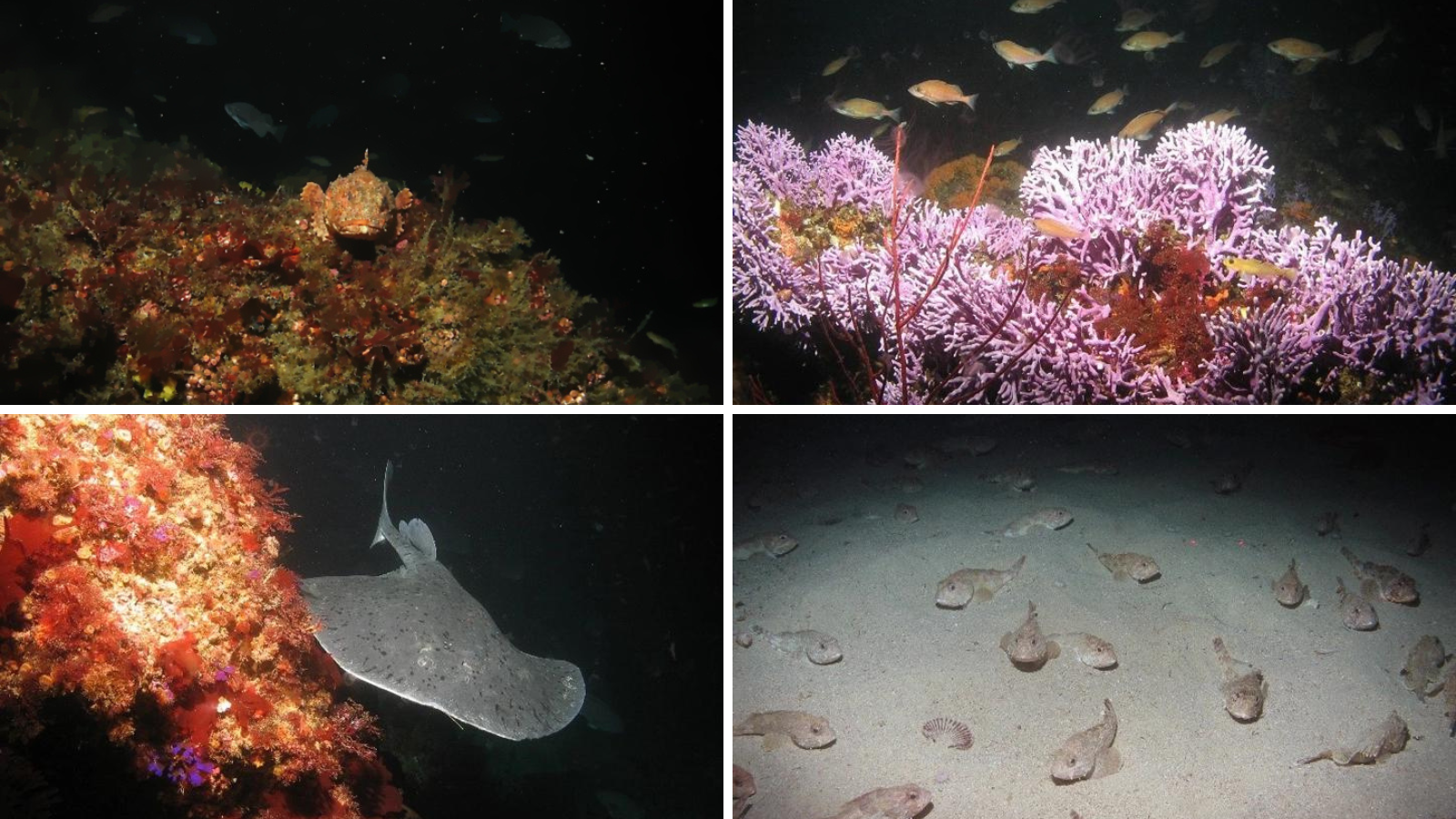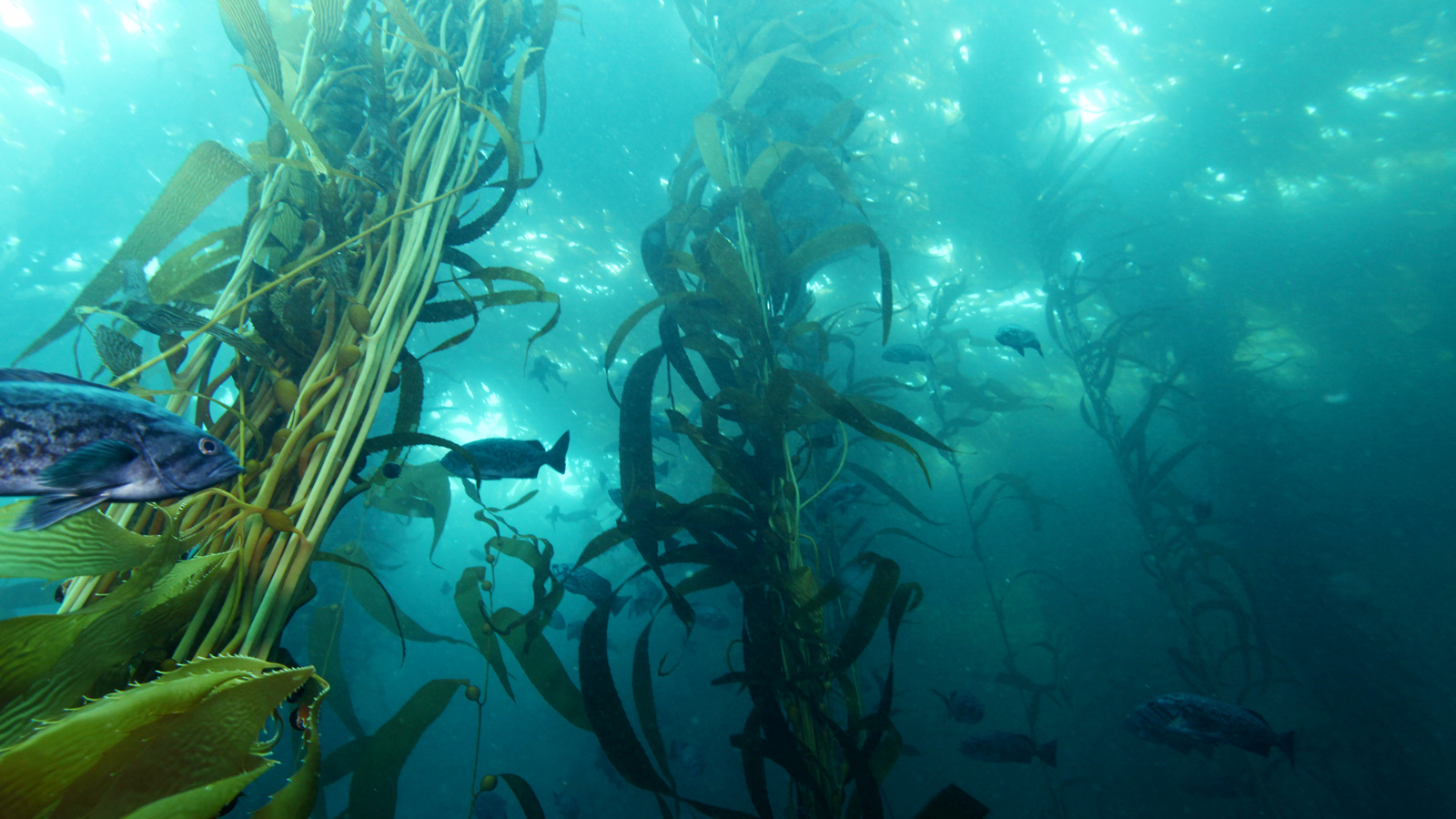
Marine protected areas are the best hope for the ocean – but only if the protections are real
With the health of the ocean under threat more than ever before, the need for action has never been greater. Marine protected areas must be a key part of that action.

Three quarters of the Earth’s surface is covered by ocean.
This vast, mysterious wilderness regulates our weather systems and climate. It provides us with water, food, and even the oxygen in our air. It absorbs around a third of all the carbon dioxide we produce. And it contains some of the most diverse and spectacular ecosystems on the planet.
Unchecked human exploitation, however – overfishing, oil and gas drilling, shipping and other destructive practices – is leading to biodiversity loss, habitat destruction and population decline among marine species on a scale that has led some experts to warn that we may already be witnessing the beginning of the next “major extinction event” in our oceans.
The urgent need for action to head off this unfolding crisis has led a growing number of scientists and conservationists to coalesce around the goal of protecting at least 30% of the world’s ocean by creating networks of marine protected areas (MPAs) – protected zones of ocean where extractive and destructive human activity is limited.
But as the global push to create MPAs gathers pace within the broader context of the “30×30” movement to protect 30% of the planet’s wild spaces by 2030, so too have the misgivings being voiced in various sections of the conservation community about just how effective these protections really are.
In May of this year, Vox’s Benji Jones summarized some of these concerns in an article on marine sanctuaries, rather dispiritingly entitled: “America’s best idea to protect its oceans has one big problem: It’s not working.”
Of the several important issues surrounding these sanctuaries that Jones discusses, the main one would seem to be that a lot of them aren’t actually even protected.
On paper, almost half of America’s ocean is covered by some form of protection. In reality, however, less than 8% of the total U.S. MPA area, or around 3% of all U.S. waters, is completely off limits to human interference, leaving the vast majority vulnerable to exploitation – including hugely destructive fishing practices that have in some cases led to immense damage to ecosystems within their borders.
The specific criticisms Jones raises in his article are not wrong. But that shouldn’t be taken to mean that MPAs don’t work.
As real-world experience with MPAs grows, it’s becoming clear that MPAs with high levels of protection – and especially fully protected “no-take” MPAs, in which all extractive and destructive activities are banned – are extremely effective in preserving biodiversity, strengthening the resilience of marine ecosystems and helping to restore wildlife habitats and populations. Biomass (the total mass of organisms in a specific area), the size and density of organisms and the number of species present – all key metrics used to assess the health of the ocean – are consistently found to be substantially higher within MPAs than in unprotected areas of ocean.
Take, for example, California’s MPAs. Within a decade of the implementation of a network of fully protected zones in the Channel Islands National Marine Sanctuary, studies were showing that the density of certain fish species had increased inside the protected zones by 50% and their biomass by 80%. The biomass of predator species was “significantly greater” inside the reserves than in unprotected areas, with 1.8 times more piscivores (creatures that eat primarily fish) and 1.3 times more carnivores in these zones. Subsequent research has found that the average size and abundance of certain species was likewise “significantly larger” in the protected areas and observed increases in the biomass of certain species occurring much more quickly inside the reserves than in surrounding areas.
Or take Cabo Pulmo in Mexico – a 27-square-mile no-take zone created in the late 1990s between Pulmo Point and Los Frailes Cape. A 2011 study revealed that within just 10 years of the implementation of protections, the area’s once spectacular coral reef – stripped almost completely bare by overfishing – now had a level of biomass comparable to unfished reefs. Fish size had also increased, and the biomass of top predators like sharks and grouper had grown by over a thousand percent. The combination of higher densities and larger fish created an average biomass more than five times that of nearby unprotected areas.
These aren’t anomalies.
The more we get to know about MPAs, the more we see that highly to fully protected areas consistently help to support larger, healthier and more diverse populations of ocean species and help protect the balance and integrity of marine ecosystems, both within their boundaries and in surrounding areas.
A 2009 analysis synthesizing a range of studies of fully protected MPAs around the world showed that these protections result in significant increases in biomass, organisms’ size and density and the number of species present. In half of the MPAs studied in that analysis, total biomass of studied species was more than triple that of unprotected areas, and density more than 60% higher. A study of the Governor Island reserve in Australia found that the biomass of rock lobsters was a whopping 2,300% higher in the protected area than outside it, and in the Las Cruces Reserve in Chile, the populations of the species being monitored were on average 2,210% higher inside the MPA than outside it.
Other research presents similarly eye-catching figures. One 2017 study, for example, found that average biomass of fish in fully protected MPAs was almost seven times greater than in nearby unprotected areas and 343% greater than in partially protected MPAs. Interestingly, that study also found that fish biomass was restored in fully protected marine reserves over time after the implementation of protections, whereas no such regeneration was seen in MPAs with only partial protections.
MPAs have also been found to protect and enhance biodiversity within their borders. A 2006 analysis of a range of studies covering a total of 44 fully protected MPAs showed that levels of biodiversity in these areas increased by an average of 23%, and fish numbers in surrounding areas also significantly increased as a result of spillover from the protected zones.
Increased biodiversity in turn increases damaged ecosystems’ ability to recover from degradation. For example, within two decades of its designation, a fully protected area in New Zealand’s Leigh Marine Reserve recovered from the destruction of its kelp forests triggered by the unchecked growth of its sea urchin population, which had thrived in the absence of heavily fished predator species. Restrictions on fishing enabled a rise in predator populations, including sea urchin-eating fish, resulting in the revival of the area’s kelp forest and a return of the local ecosystem to a complex, healthy condition.
The list of studies is long and growing, but the point is this:
The patchy record of MPAs in U.S. waters doesn’t show that MPAs don’t work. It just shows that many of the places we’re calling marine protected areas do not have sufficient levels of protection.
The 30×30 target is a decent target to aim for, but randomly labelling 30% of the ocean “protected” and claiming we’ve met our conservation goals isn’t going to have any real impact. For that to happen, a number of other conditions have to be met.
First, ‘protection’ has to mean full or high levels of protection. Not fisheries management areas. Not flimsy regulations that include exceptions that allow for certain kinds of potentially damaging extractive practices, or mere prohibitions on certain types of fishing gear or shipping. Proper protections.
Second, for 30×30 to really mean anything, the protected area must include 30% (at least) of every geographic and ecological region. The vast majority of contiguous fully protected MPA area in U.S. waters is the 580,000 square mile Papahānaumokuākea Marine National Monument in the remote Pacific off the coast of Hawaii. Given the relative lack of fully protected areas elsewhere in U.S. waters, the immediate priority should be ensuring that full protections are put in place in MPAs across all key regions to preserve the diverse habitats and ecosystems in the country’s ocean. Right now, special attention should be given to near-shore areas, currently significantly underrepresented in the U.S. MPA inventory.
By the same token, creating small, isolated MPAs is not, in itself, enough to have a major impact. While smaller protected zones can be highly effective when joined together in networks, generally speaking MPAs should be as large as possible (when it comes to marine protections, science shows that size does matter), and should be ecologically linked in regional networks to ensure connectivity between habitats.
Research shows that well-connected, ecologically coherent MPA networks can help highly mobile marine animals like whales and sea turtles by protecting important sites along their migratory routes, such as feeding and breeding grounds. (In the western Pacific, for example, protection of the nesting beaches and foraging habitats of green turtles, and portions of their routes to foraging grounds outside the protected zone, has played a role in rescuing these animals from the brink of extinction.)
Lastly, planning, designing and implementing MPAs and MPA networks needs to be based in a comprehensive, strategic, science-based process that integrates regional scientific knowledge and engages local communities and other stakeholders. And this should be coupled with a robust strategy for how these protections are to be monitored and enforced once they’ve been implemented – as happened in California, whose progress toward successful marine protected areas is now widely considered a valuable case study in how to plan, implement and manage a statewide network of MPAs.
With the health of the world’s ocean under threat today more than ever before, the need for action to boost the ocean’s resilience has never been greater. That means action on a range of different fronts simultaneously – one of which is, yes, the establishment of marine protected areas. Get it right, and they work. So we need to make sure we get it right.
Topics
Authors
James Horrox
Policy Analyst, Frontier Group
James Horrox is a policy analyst at Frontier Group, based in Los Angeles. He holds a BA and PhD in politics and has taught at Manchester University, the University of Salford and the Open University in his native UK. He has worked as a freelance academic editor for more than a decade, and before joining Frontier Group in 2019 he spent two years as a prospect researcher in the Public Interest Network's LA office. His writing has been published in various media outlets, books, journals and reference works.
Find Out More

Strengthening protections for our coast’s best places

A sea turtle tour to protect California’s coast

Help California’s kelp forests

